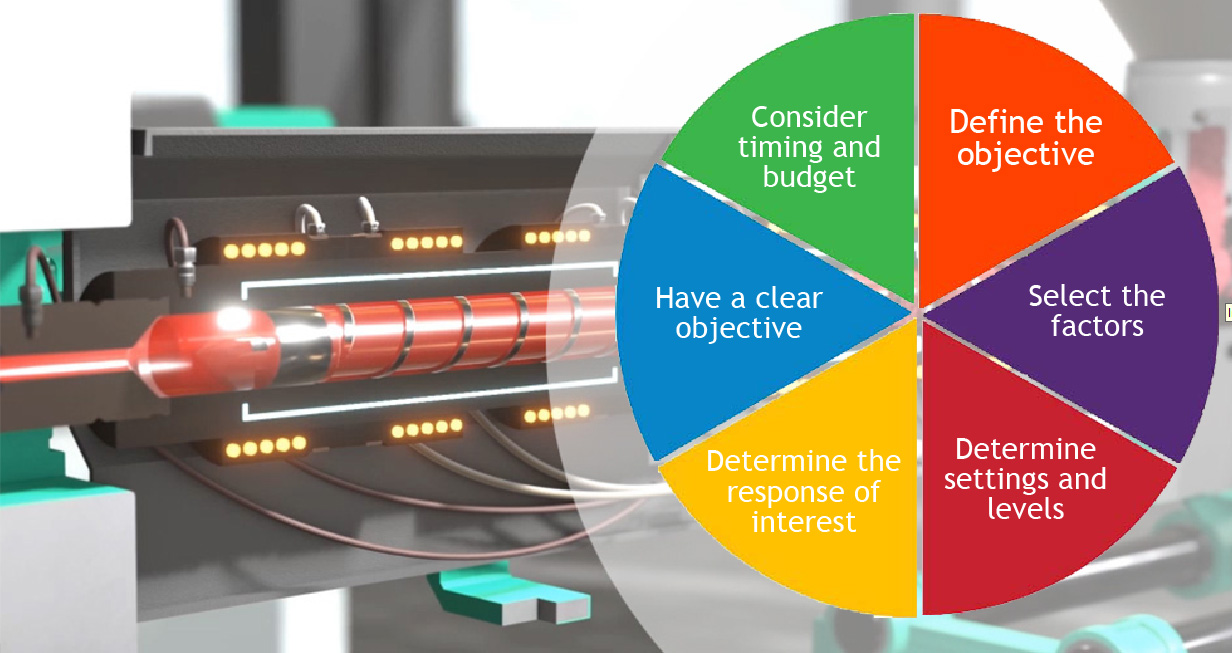Design of Experiments, or DOE, is a powerful mathematical tool that can be successfully applied to areas of new mold trials and to trouble-shoot potentially challenging processes. Experimental design techniques can be utilized by anyone with a fundamental understanding of injection molding.
There are five primary stages for conducting a designed experiment. These are planning, selecting the tests to run, conducting the experiment, analyzing the data, and then confirming the results. Here is an overview of each stage:
Step 1- PLAN
The first step is planning the experiment. This includes defining the objective, selecting the factors to be studied, and determining the settings, or levels, for each factor. In this phase, we also determine the response of interest. The response of interest is the variable we are trying to determine by running the experiment. We will refer to this simply as the “response” throughout these lessons.

Step 2- SELECT OA
The second step is selecting the series of tests to be performed. In this phase we also need to determine the number of repeat samples for each experiment. In a designed experiment a mathematical set of tests, referred to as orthogonal array (O.A.), are used for this step.
Step 3 – CONDUCT
The third step is conducting the experiment. It is important to have a written plan or protocol in place and that someone from the team is present while the trials are being conducted to note any deviations from the experiment protocol.
Step 4 – ANALYZE
After conducting the experiment, the fourth step is to measure the responses of interest and analyze the results. In this stage you will utilize the graphs and charts along with the statistical output generated from the software used for the experiment.
Step 5 – CONFIRM
The fifth and final step is the confirmation phase. By making a prediction of the best setting for each factor and then trying this setting one or more times, you can confirm the results. Verifying the optimized process set up is essential for maintaining part quality.
Design of Experiments (DOE) can help injection molders with new tool trials and to trouble-shoot problematic processes. Having a repeatable and robust process is essential prior to conducting a designed experiment. Understanding the five primary stages of conducting a designed experiment can provide injection molding professionals with the ability to utilize this powerful tool.
